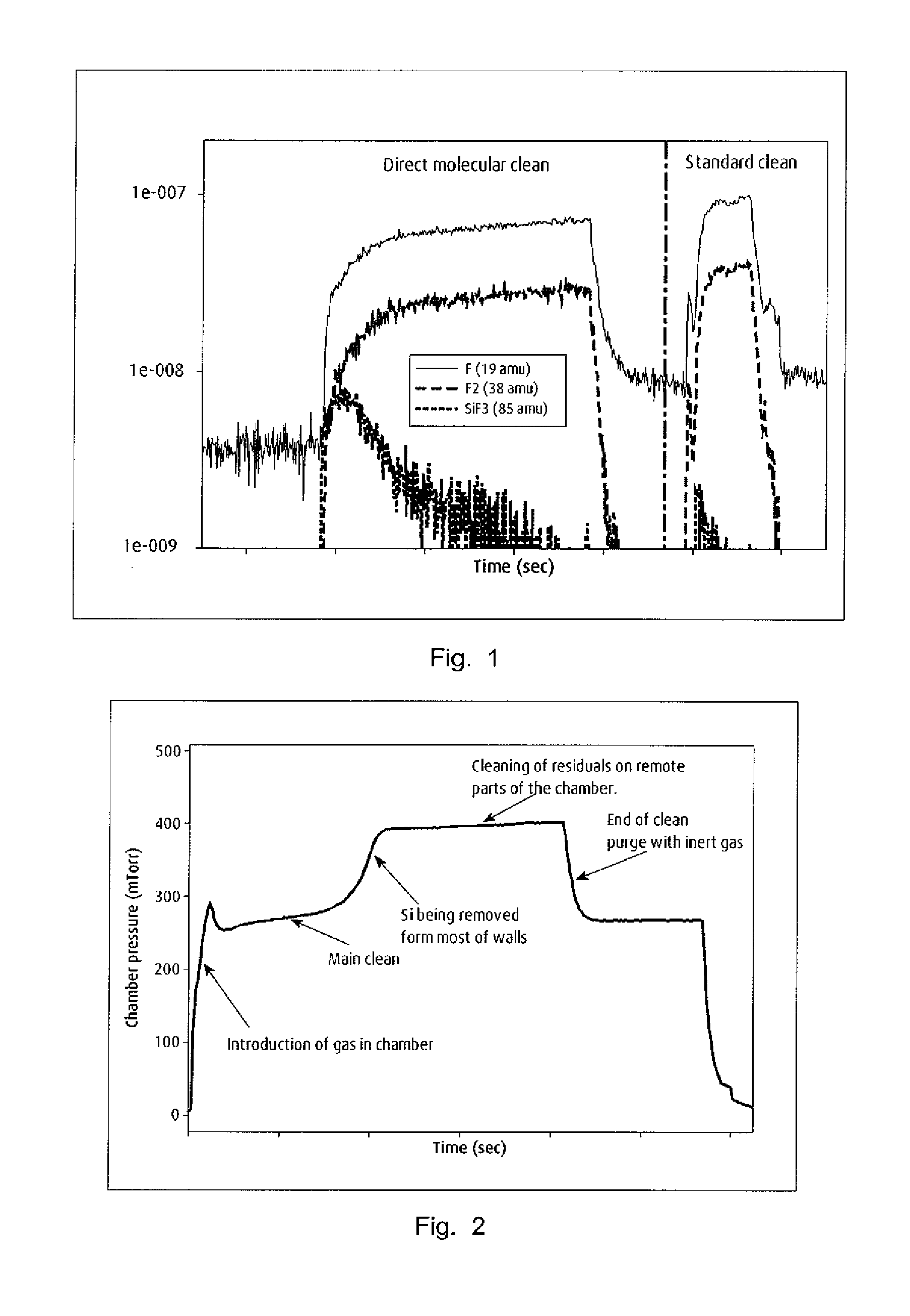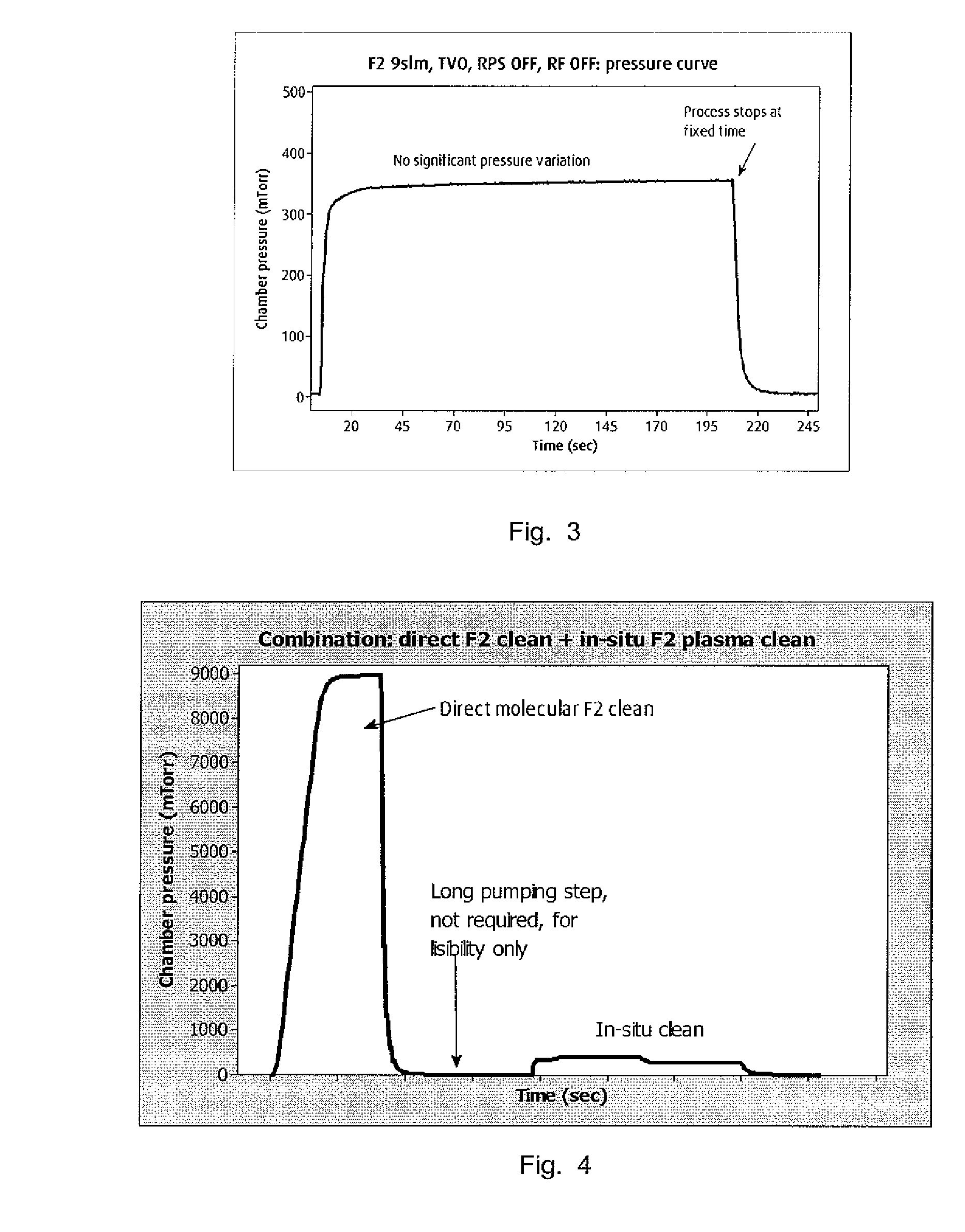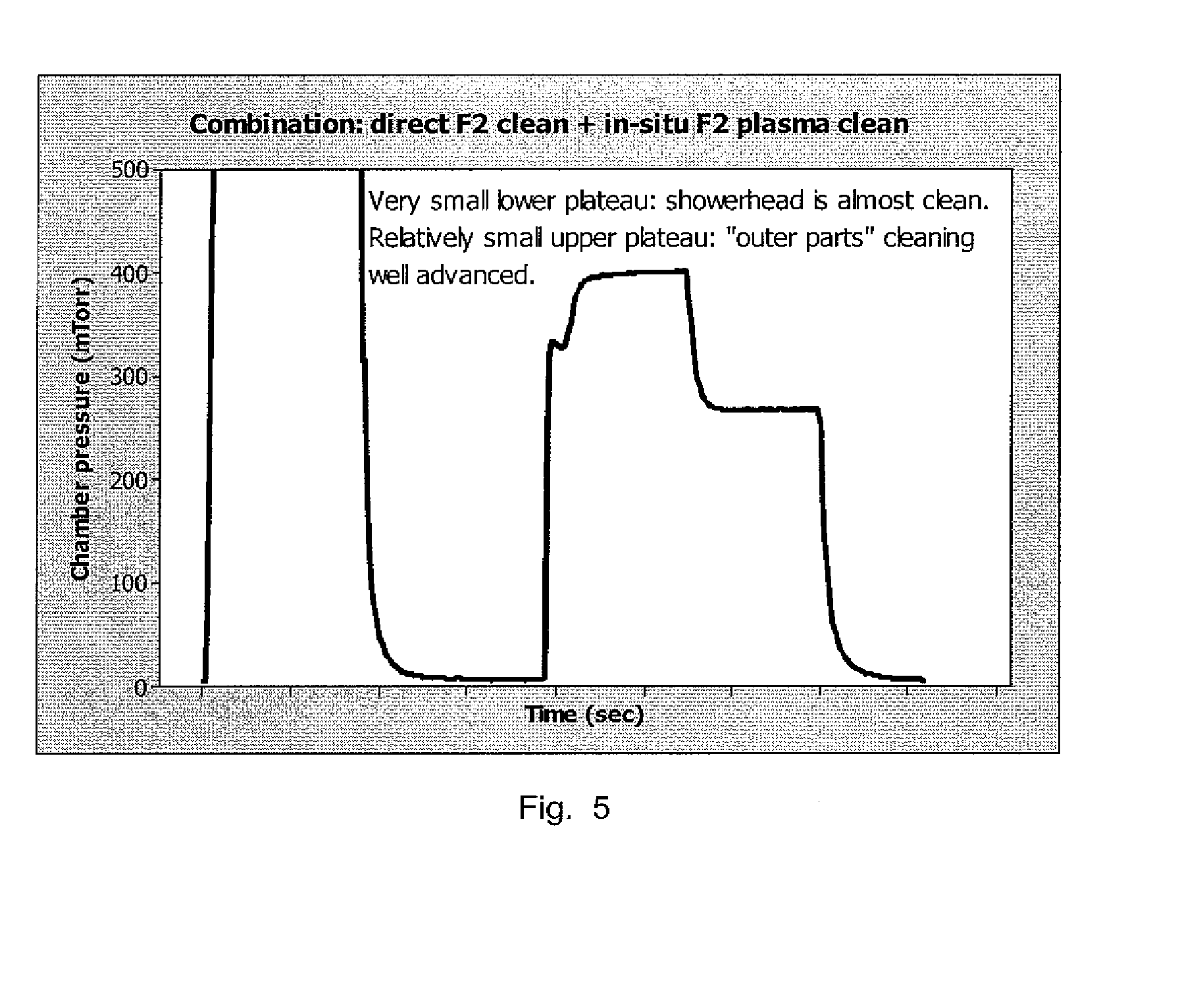Chemical vapor deposition chamber cleaning with molecular fluorine
a technology of molecular fluorine and chemical vapor deposition chamber, which is applied in the direction of cleaning hollow articles, coatings, chemistry apparatus and processes, etc., can solve the problems of increasing equipment and operation costs, reducing the life of equipment and parts, and causing damage to the equipment and parts
- Summary
- Abstract
- Description
- Claims
- Application Information
AI Technical Summary
Benefits of technology
Problems solved by technology
Method used
Image
Examples
Embodiment Construction
[0015]The present invention uses molecular fluorine for PECVD chamber cleaning. These PECVD chambers are used to deposit silicon (both amorphous and microcrystalline) for photovoltaic devices. Generally, the deposition processes are carried out at temperatures as low as 160° C. and do not need plasma activation, either in-situ or remote.
[0016]For cleaning of the PECVD chamber according to the present invention, fluorine is introduced to the chamber at a predetermined pressure. Cleaning of the chamber is accomplished solely by the reaction of molecular fluorine with deposited silicon on the interior walls and equipment of the PECVD chamber. The time needed for cleaning is dependent on the predetermined pressure and surface temperature.
[0017]In accordance with the present invention, it has been found that it is possible to clean the PECVD chamber at base pressure obtained by having the valves from the chamber to the pump foreline fully open. Pressures as low as 350 mTorr (0.47 mbar) w...
PUM
| Property | Measurement | Unit |
|---|---|---|
| fixed pressure | aaaaa | aaaaa |
| fixed pressure | aaaaa | aaaaa |
| temperature | aaaaa | aaaaa |
Abstract
Description
Claims
Application Information
 Login to View More
Login to View More - R&D
- Intellectual Property
- Life Sciences
- Materials
- Tech Scout
- Unparalleled Data Quality
- Higher Quality Content
- 60% Fewer Hallucinations
Browse by: Latest US Patents, China's latest patents, Technical Efficacy Thesaurus, Application Domain, Technology Topic, Popular Technical Reports.
© 2025 PatSnap. All rights reserved.Legal|Privacy policy|Modern Slavery Act Transparency Statement|Sitemap|About US| Contact US: help@patsnap.com



